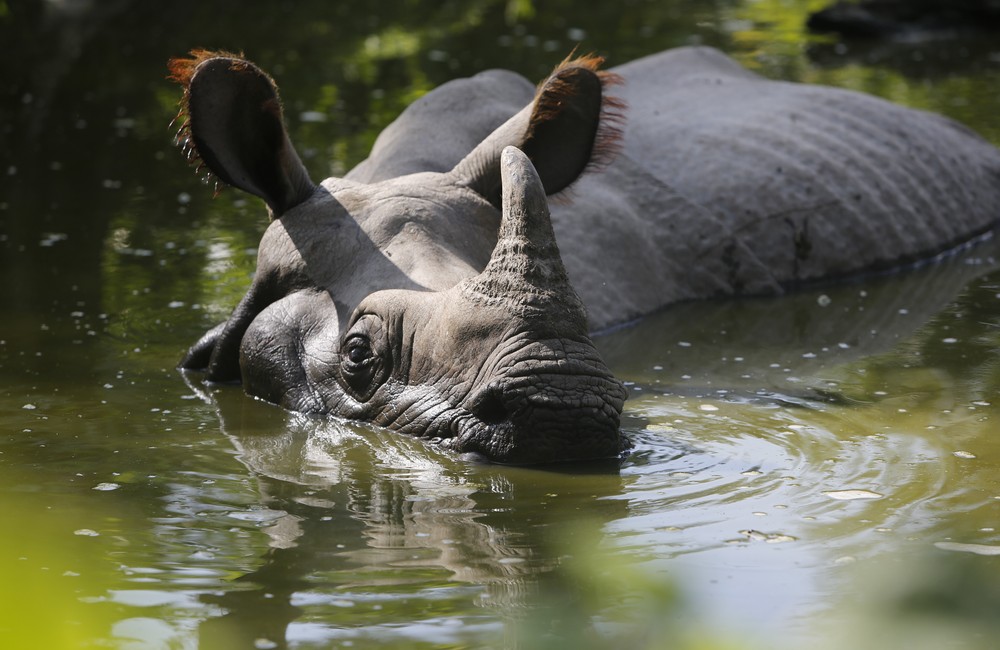Efforts to save the Indian rhino are in full swing in India’s state of Assam. In a move to ensure the survival of this vulnerable species, one male and three female rhinos were translocated from Pobitora Wildlife Sanctuary to Manas National Park on Monday 17 January. The animals join two females that were moved to Manas in late December 2010, and five rhinos (two males and three females) that were moved in 2008. Translocating the rhinos will help create a viable population of this vulnerable species that has recovered from fewer than 200 animals in the early 1990s to more than 2,850 today.
We are absolutely delighted to see more rhinos return to Manas. Save the Rhino secured funds towards the moves and preparations from Chester Zoo and Stuttgart Zoo and from our own core funds” said Cathy Dean, Director of Save the Rhino International. “There are plans to move more rhinos later in the year and Save the Rhino is pleased to be a part of Indian Rhino Vision 2020 working alongside our U.S. partner International Rhino Foundation.
The translocations are the backbone of the ambitious Indian Rhino Vision (IRV) 2020 – a partnership among the government of Assam, the International Rhino Foundation, the World Wide Fund for Nature, the Bodoland Territorial Council, and the U.S. Fish & Wildlife Service – that aims to attain a population of 3,000 wild rhinos in seven of Assam’s protected areas by the year 2020.
Pobitora, where the rhinos were captured, boasts the highest density of rhinos in the world, with more than 90 rhinos in less than 18 square kilometers (4,450 acres) of rhino habitat. To minimize the chance of loss from disease and other disasters, the rhinos need to be spread among other parks. The translocations will lessen pressure on Pobitora’s rhinos for food and space, and hopefully reduce the number of rhinos straying into nearby villages, which can lead to injuries to people and animals. The other stronghold for Greater-one horned rhinos is Kaziranga National Park, which holds 2,048 rhinos (2009 census), or 72% of the total population. So it is imperative that these animals are spread out.
Moving a rhino is no easy task. The moves are the result of months of meticulous planning for every possible situation that might arise from capture to release, all with the aim of keeping both the animals and the people involved safe. Under the guidance of veterinarians, field workers, park guards, conservationists and forest department officials, the four animals were captured and released within 24 hours. Veterinarians darted the animals with tranquilizers, then transported them 250 km in crates specially-designed to hold the 1.5 to 2 ton pachyderms. Each rhino is radio-collared and will be closely monitored by WWF-India and Manas National Park staff.
Manas National Park, once an icon among India’s many spectacular wildlife reserves, was designated a UNESCO World Heritage Site in 1985. As of 2010, only 911 sites in the world have been named as a place with special cultural or physical significance. Manas is home to the tiger, pygmy hog and golden langur as well as elephants, wild buffalo and Indian bison. Rhinos were once common in the park, but violent civil conflict beginning in 1989 caused massive damage to the park’s infrastructure, including destruction of anti-poaching camps, roads and villages. Until recently, the last rhino seen in Manas was in 1996.
A tremendous international collaboration has rebuilt the Park’s anti-poaching camps, repaired roads and bridges, and begun to repopulate Manas with rhino
We have hired, trained and equipped guards from the local communities, some of whom are former poachers now committed to saving wildlife.
said Susie Ellis, Executive Director of the International Rhino Foundation.
The arrival of the female rhinos is heralded by local communities, who had been blamed for the demise of the park. Kampa Borgoyari, deputy chief of Bodoland Territorial Council, says of the Park’s new arrivals,
We are committed to bringing Manas back to its former glory, and the homecoming of the rhinos is part of that effort.









